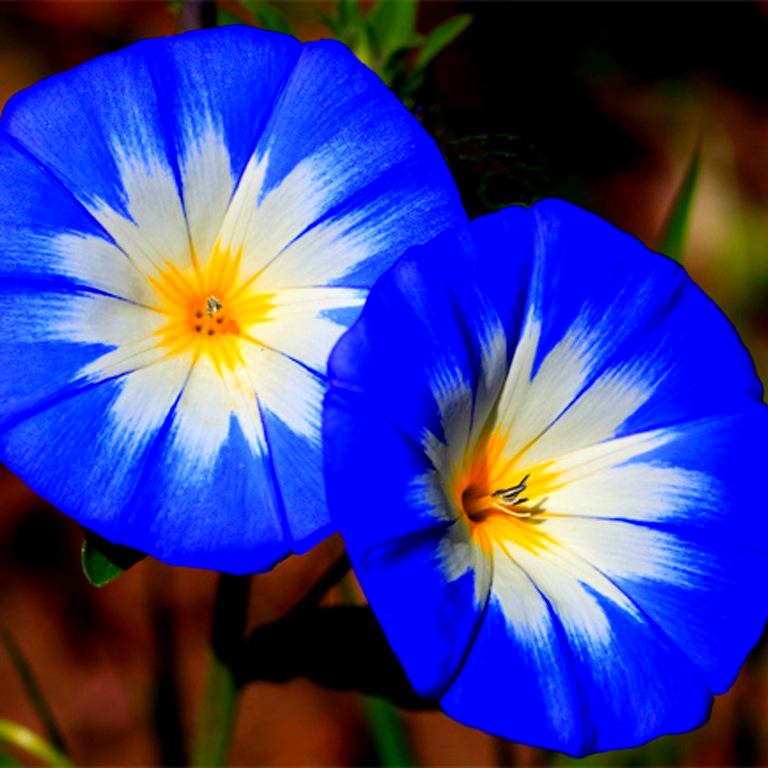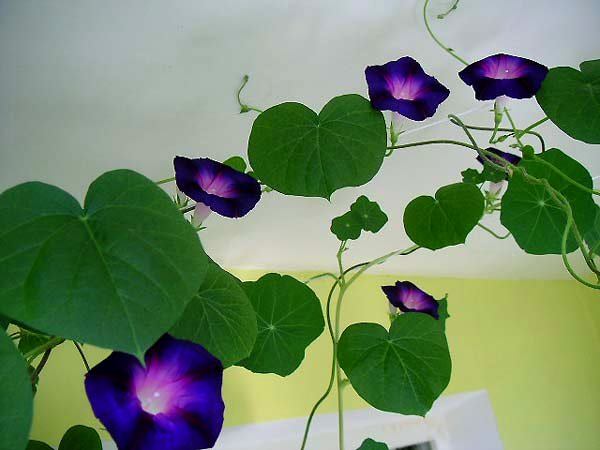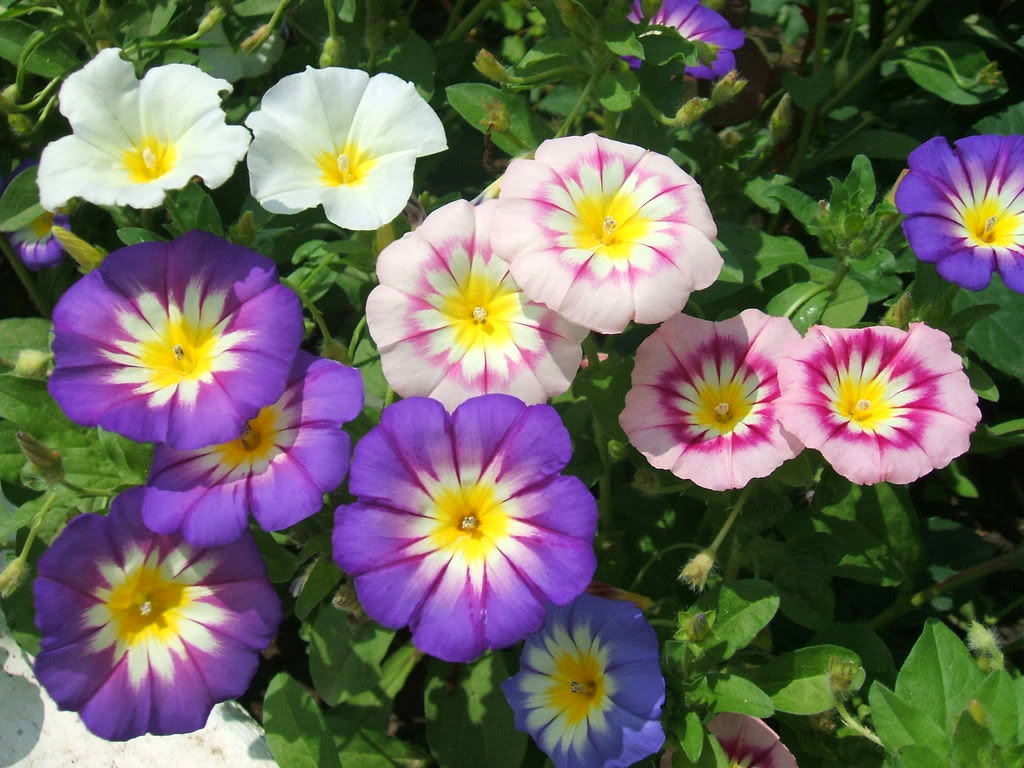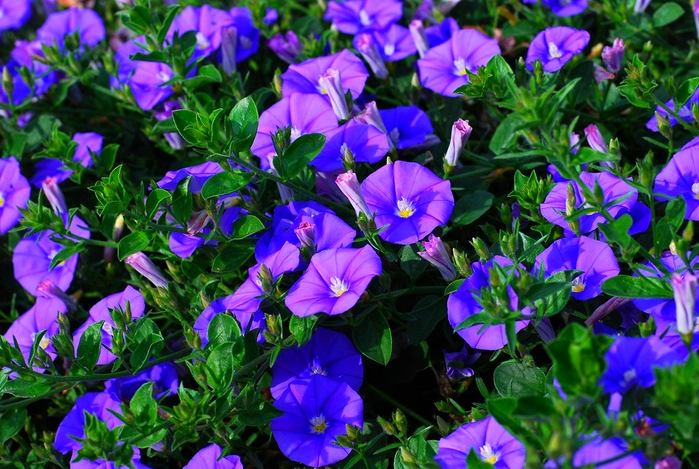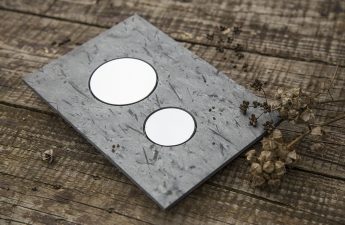The balcony has long ceased to be a storage room where"thrifty" owners put out various junk. Today, more and more people are trying to turn a balcony or loggia into a beautiful flower garden. Our article will help you finally do it. Spring concerns related to plants are increasingly beginning to attract even people who do not have their own garden plot. A resident of a metropolis also has the opportunity to provide himself with such a pleasant "headache" for the entire season as the hassle of caring for his own mini-garden on a balcony or loggia. In fact, this is not so difficult, and in the simplest version, you only need to water your pets. If you are a real enthusiast, then watering will not be enough, it will take much more effort and time, but the effect will be worth it. We will tell you about the simplest and most spectacular plants, the presence of which on your balcony will give it a completely new quality. Abundant flowering and greenery will delight not only you, but also passers-by on the street. And your neighbors will be jealous, and by next spring some of them will follow your example and also decorate their balcony with flowers. When to start landscaping? There is only one recommendation here: when the threat of recurrent frosts disappears. As soon as flowering plants or their seedlings are put outside in garden centers, this is a signal for you. It's time to start! In Crimea and Stavropol - at the beginning of May, in Arkhangelsk and Tomsk - almost a month later. We will give brief characteristics of the most popular annual and some perennial plants due to their high decorative properties, which will most effectively transform a balcony with minimal costs.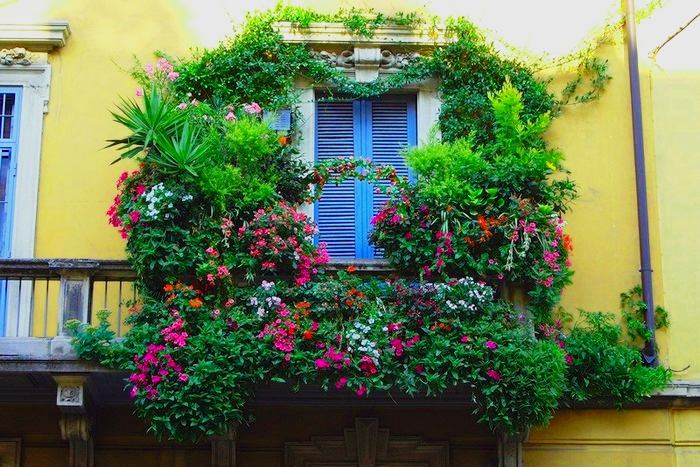
Balcony Greening Methods
Depending on the size of the balcony (loggia,terraces), climate conditions, amount of sun and volumes of enthusiasm and knowledge, even the tiniest balcony can be turned into a real miracle. Obviously, the larger the area, the more opportunities for creating a real mini-garden right outside the windows. Conceptual approaches can be very different - from a stylish Japanese-style garden (something like a miniature alpine slide or stone landscape) to unrestrained eclecticism in country style: a riot of flowers in the literal and figurative sense. Even the simplest and "everyday" flowering plants can be used to create a real jungle. Annual plants, including bindweed-vines, will change the balcony beyond recognition in a few weeks! A balcony can be decorated not only with abundantly flowering plants, but also with their decorative-deciduous brothers, the main beauty of which is in the variegation and brightness of the leaves. We will not talk about it yet, because this is a separate topic for an in-depth conversation.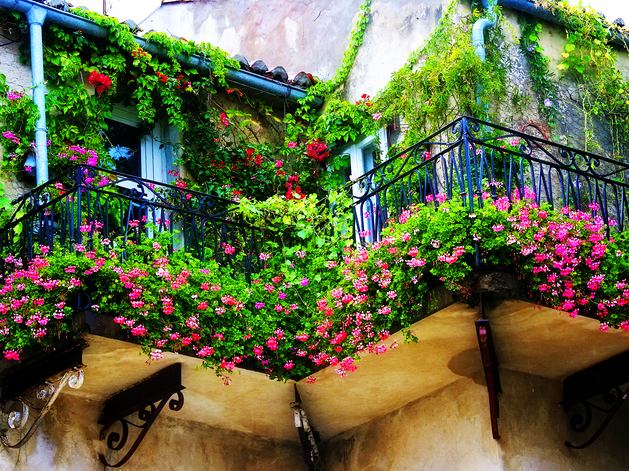
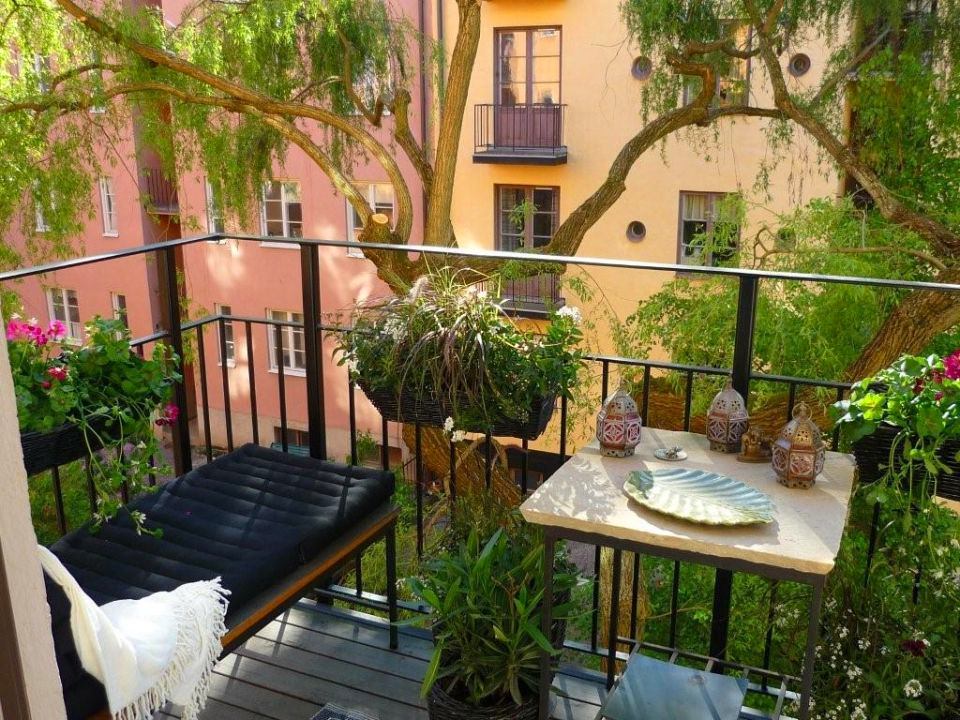
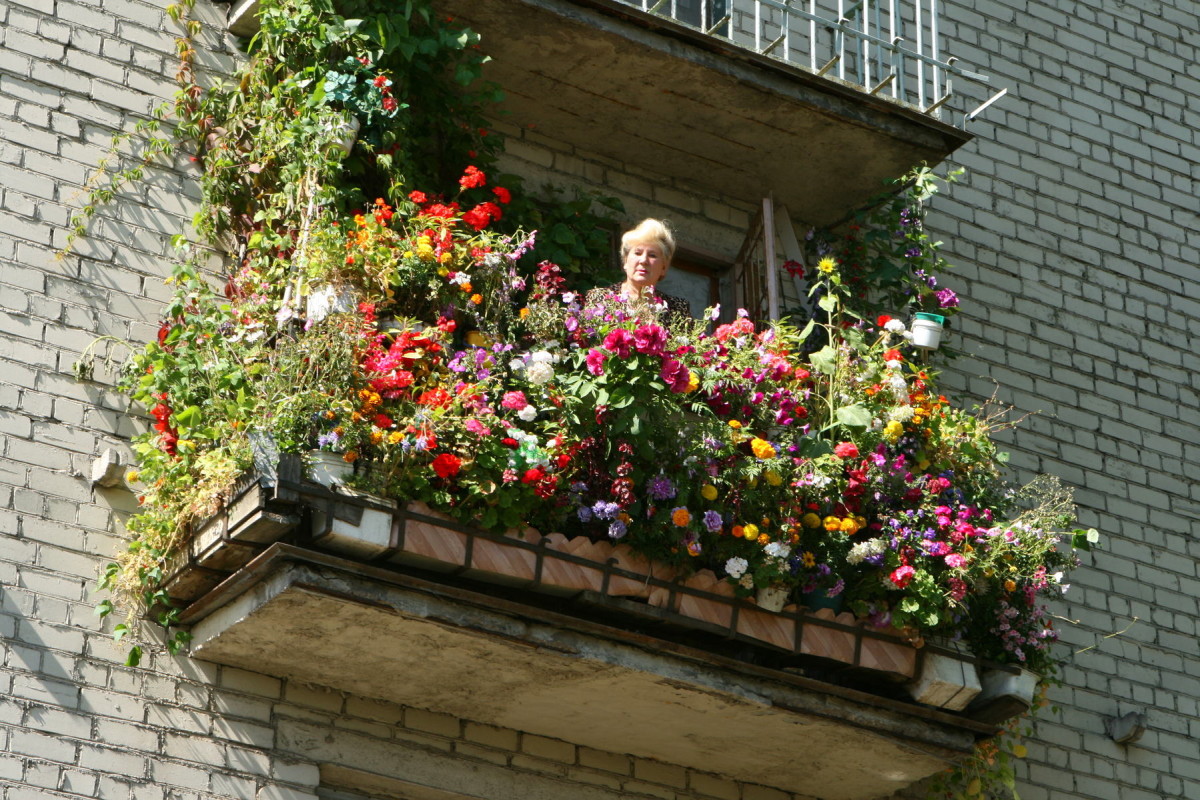
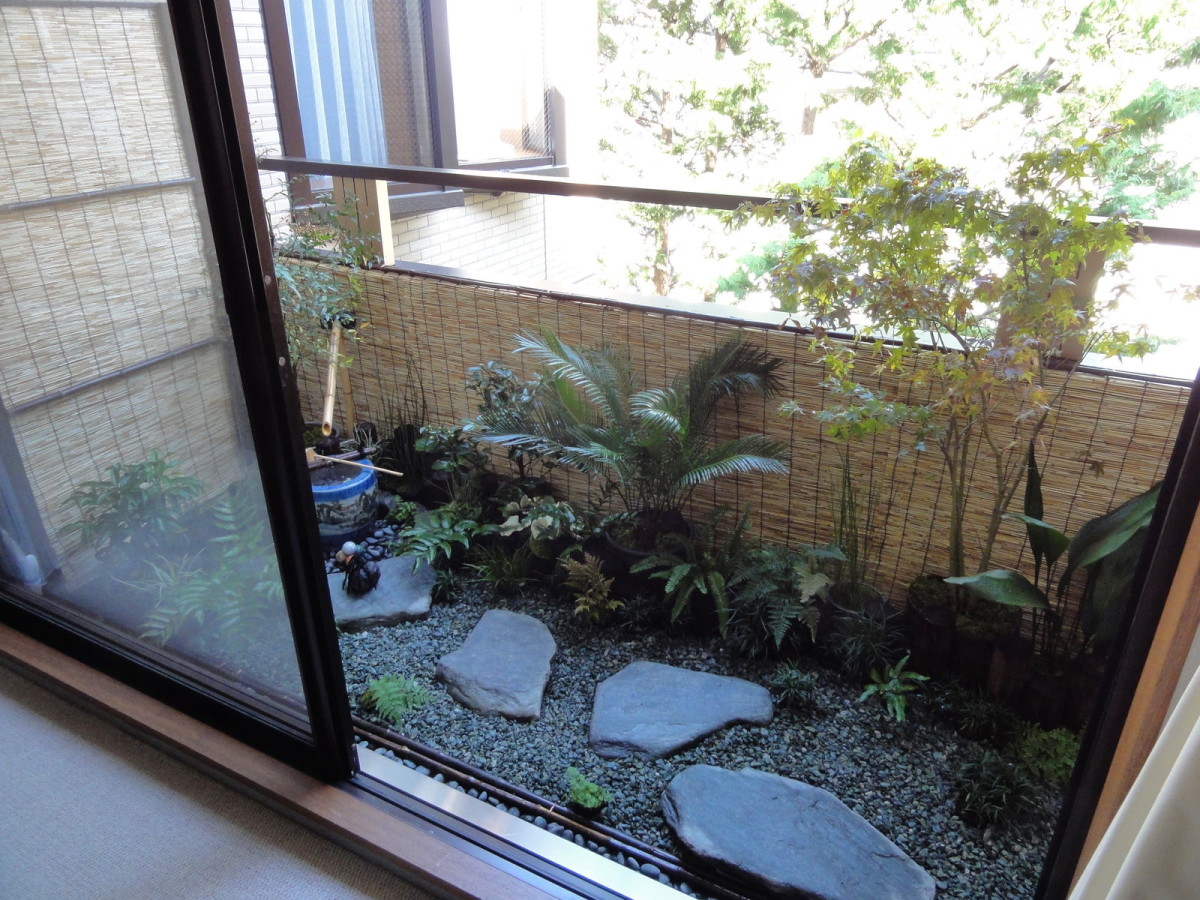
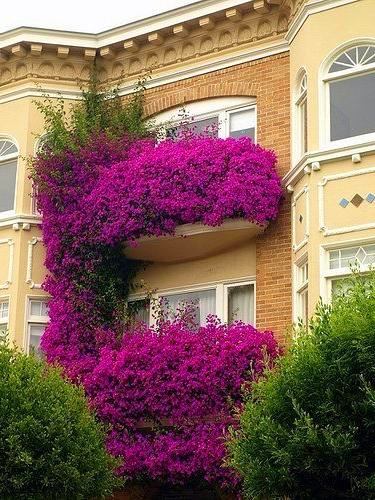
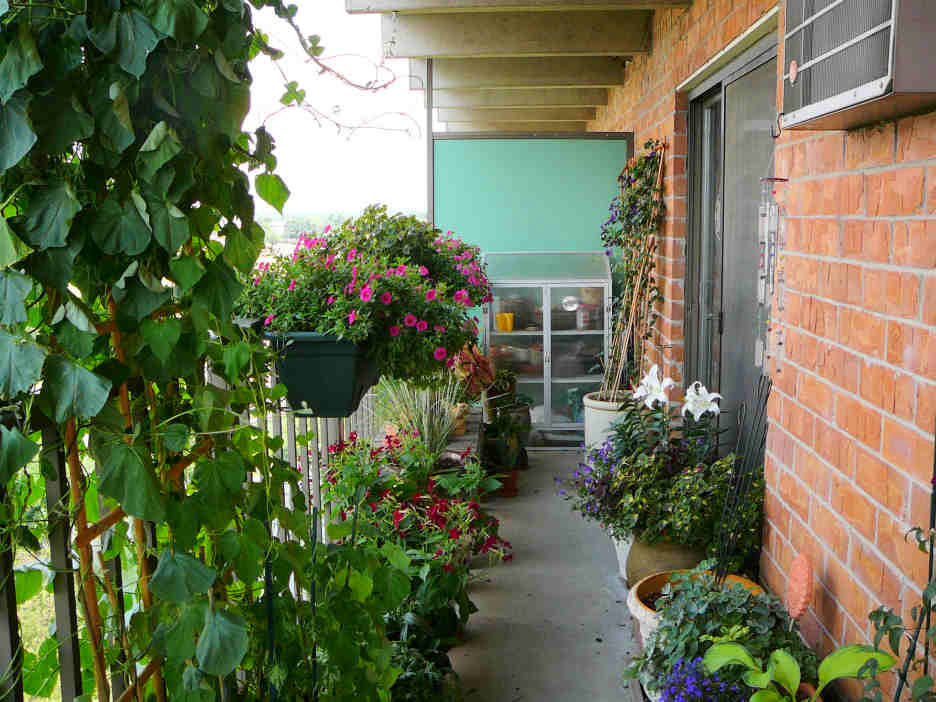
Petunia
Petunias are essential inhabitants of flower beds,flower beds, borders, vases, balconies and windows. They give bright fragrant cascades of flowers of all shades of the rainbow, from the beginning of summer until frost; sometimes the flowers completely cover the foliage and shoots. Modern hybrid varieties are very decorative, in which the diameter of the flower can reach 12 centimeters. Ampelous petunias, which are called surfinia, bloom especially powerfully and uncontrollably. The color of large (up to 6 cm in diameter) surfinia flowers varies, mainly these are rich tones with a dark or light throat. Petunia is very photophilous (tolerates only slight shading) and thermophilic, develops better on fertile, light, slightly acidic soils. With the onset of prolonged cold and rain, petunia stops flowering, and with the onset of good weather it resumes it again. Petunia is drought-resistant, but with regular watering it will reward you with more lush, beautiful bushes and abundant flowering. It responds very well to careful and timely fertilizing.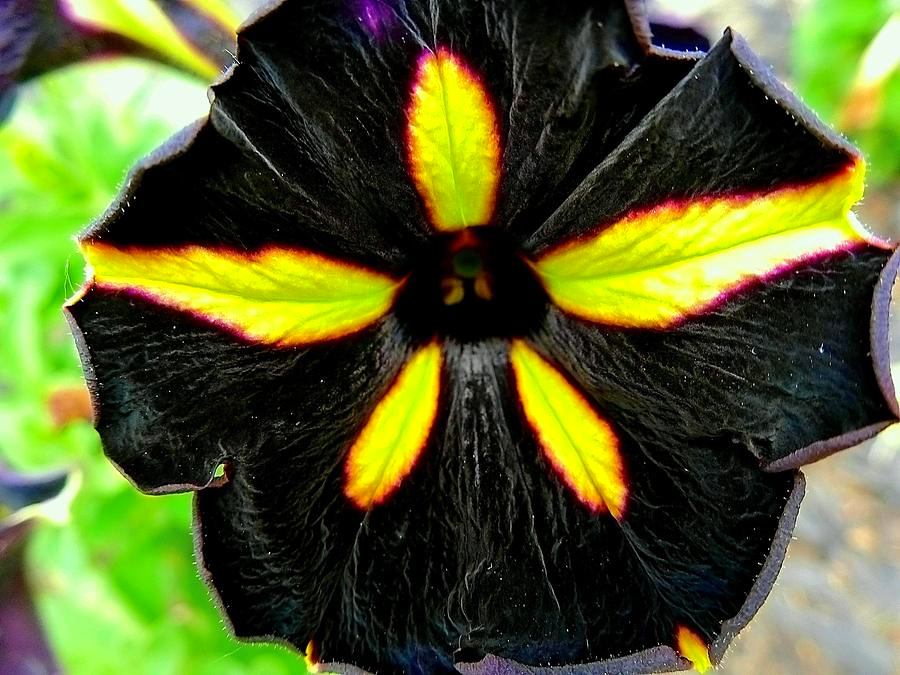

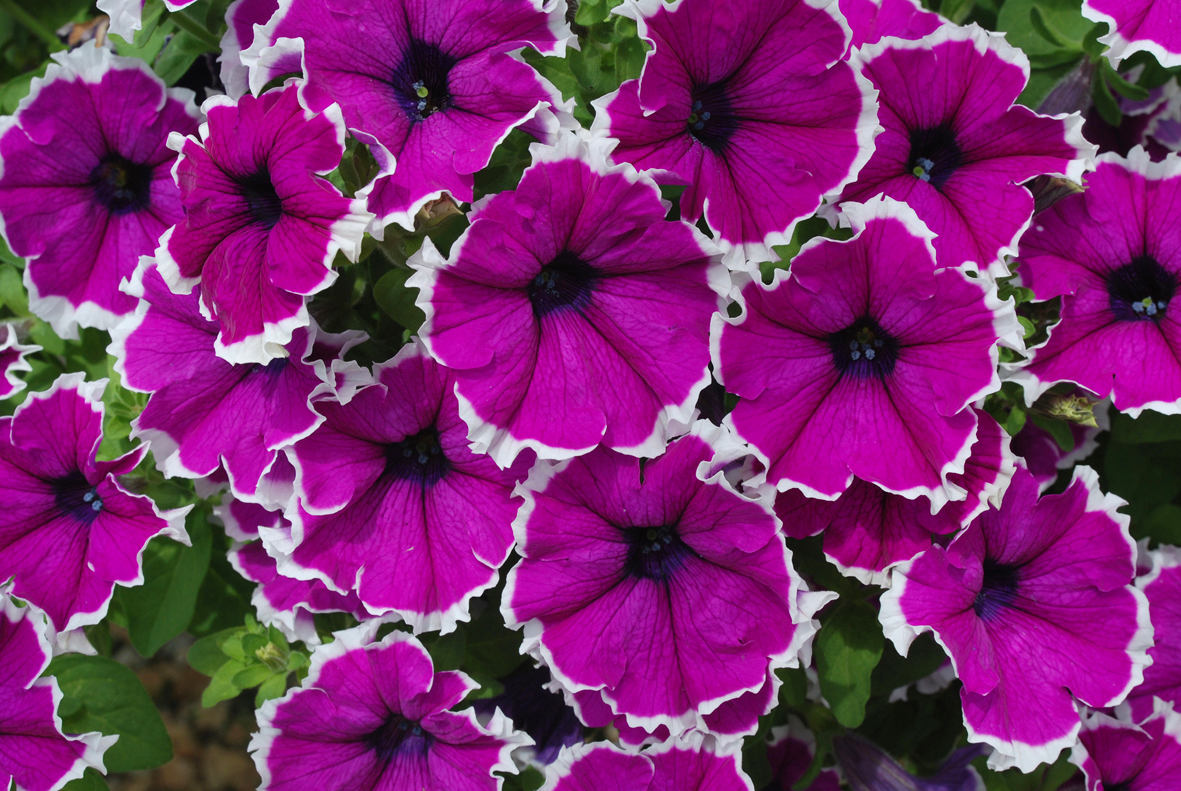
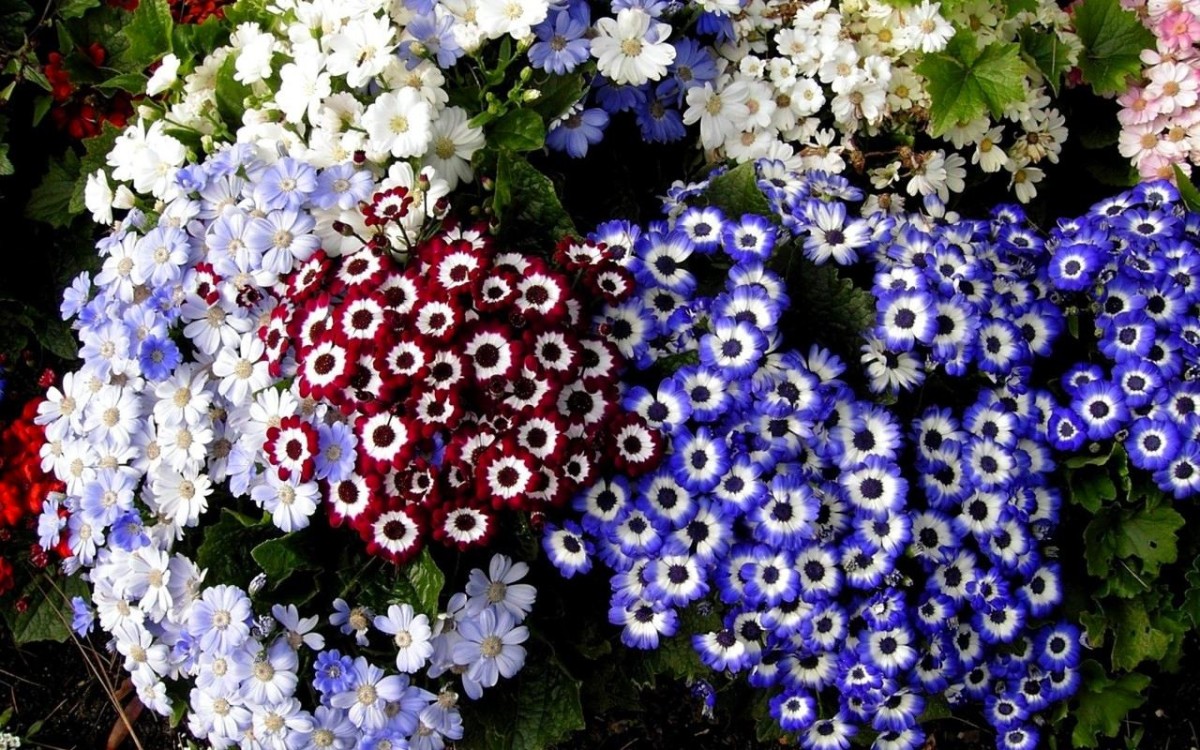
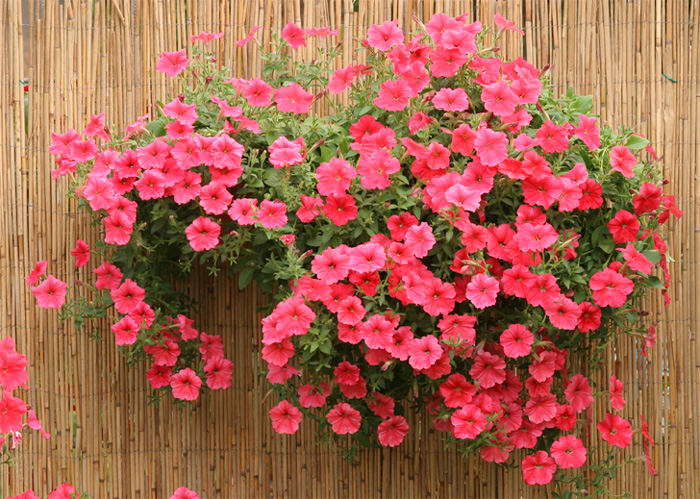
Coleus
Coleus is completely unique in terms ofdecorativeness and ease of care of a plant with fast growth. Coleus are distinguished by an extraordinary variety of shapes and colors of the leaf blade, for which they are valued. The lush foliage is all the more abundant, the more carefully the owner pinches the flower stalks. At the same time, the lateral buds wake up, and a single bush with good soil turns into a huge bright clump. The only drawback is weak stems that do not lignify well. However, an annual plant does not need this. Coleus can be called an ideal plant. This species combines brilliant beauty, endurance and unpretentiousness and the ability to grow both indoors and outdoors. Sunlight is the main parameter that greatly affects both the color of coleus and their growth - choose the most illuminated place for them.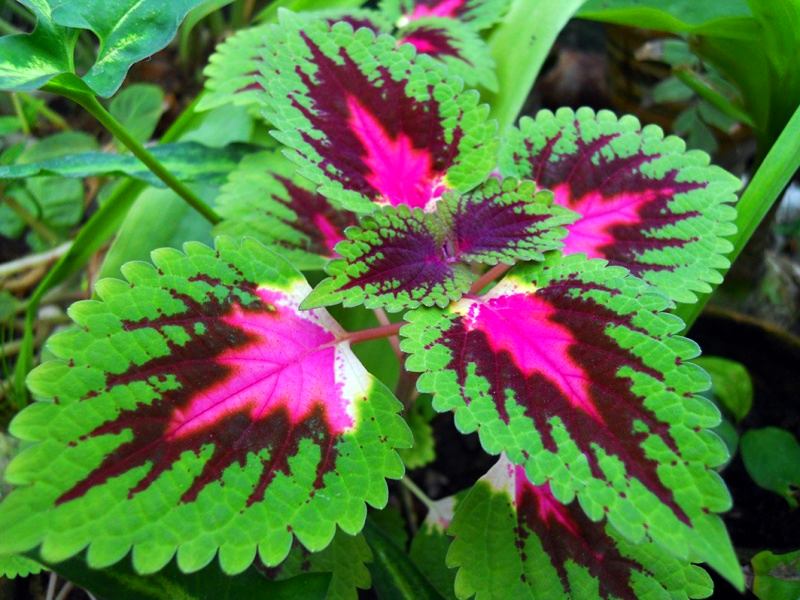
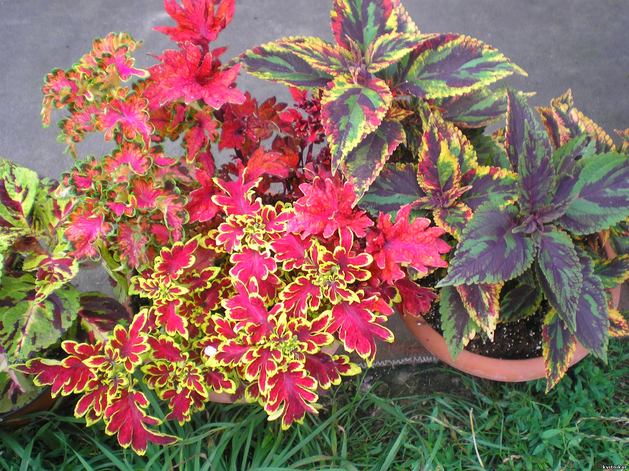

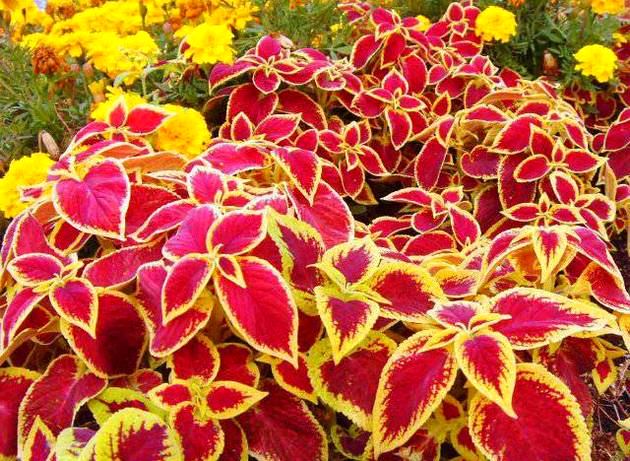
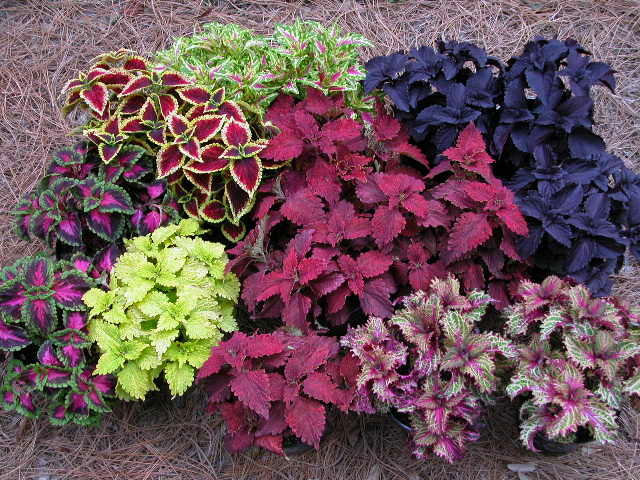
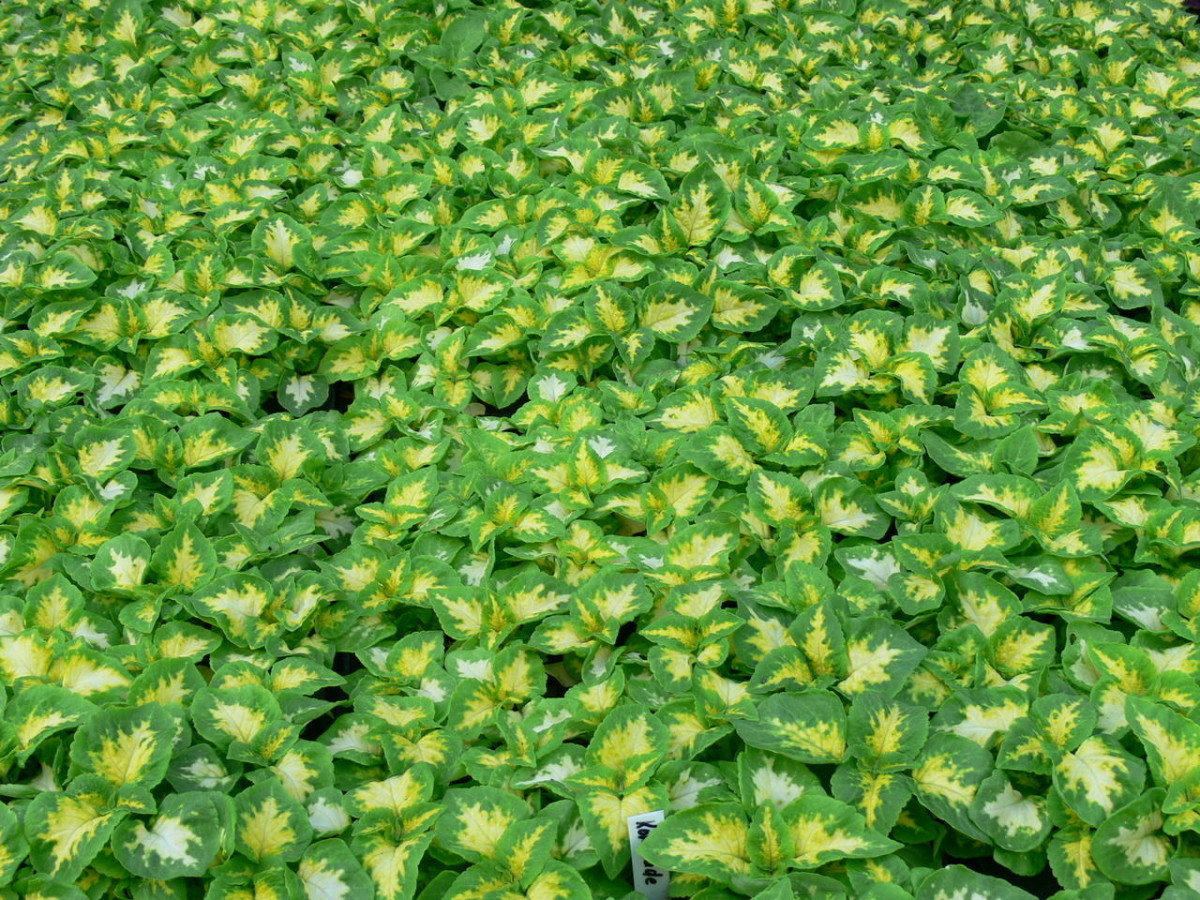
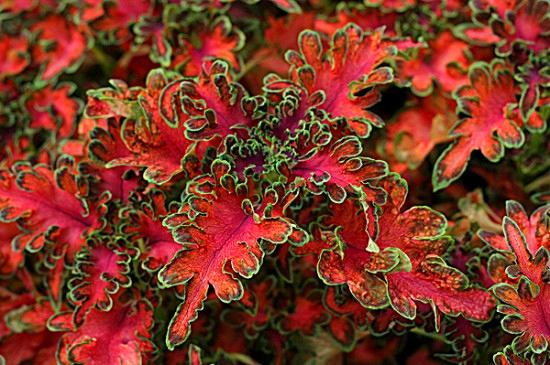 Our opinion:— When organizing planting places for your pets, you need to be extremely careful and do the fastening very carefully, especially in the case of hanging boxes and pots. Consider the high windage of plants — the wind should not tip over pots and structures.
Our opinion:— When organizing planting places for your pets, you need to be extremely careful and do the fastening very carefully, especially in the case of hanging boxes and pots. Consider the high windage of plants — the wind should not tip over pots and structures.
Balsam
Impatiens with bright pink or red flowersliterally burns the green foliage of the bush. It blooms in natural conditions in warm weather from July to September or even until the first frost. It does not like the cold, as it comes from the tropics and subtropics. Its popularity among amateurs is confirmed by the presence of several names: Ogonyok - because of the brightness of the color; Vanka-wet - as a hint at its moisture-loving nature and the dew drops that sometimes appear on the leaves; Touch-me-not - because at the slightest touch to the ripe fruit-box it bursts. Impatiens does not tolerate cold at all, so it should be planted on the balcony later, while due to the speed of growth in a couple of weeks it will become one of the most noticeable decorations of your mini-garden.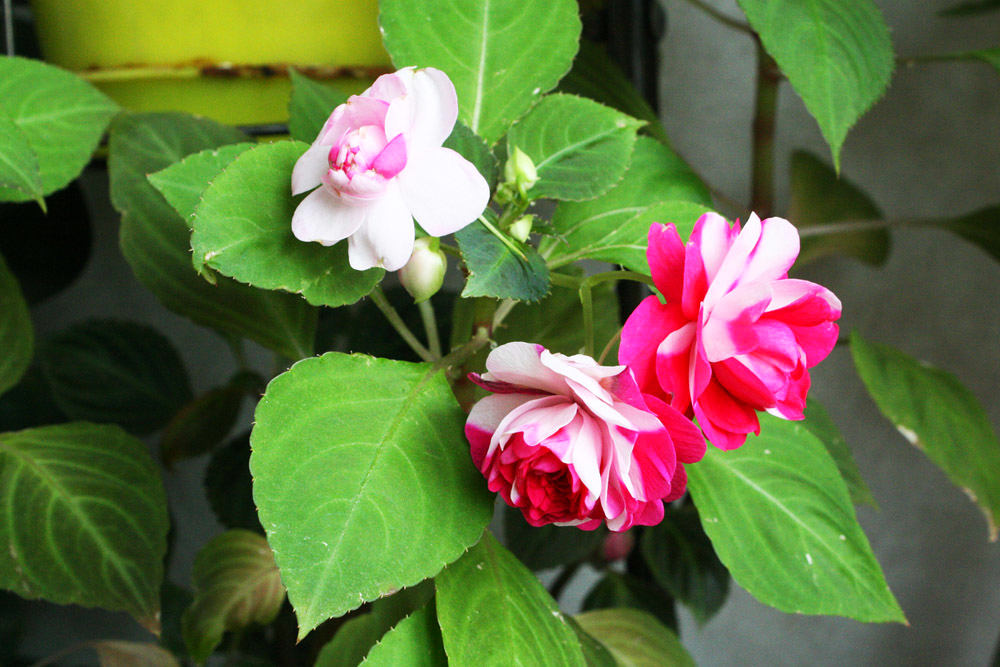
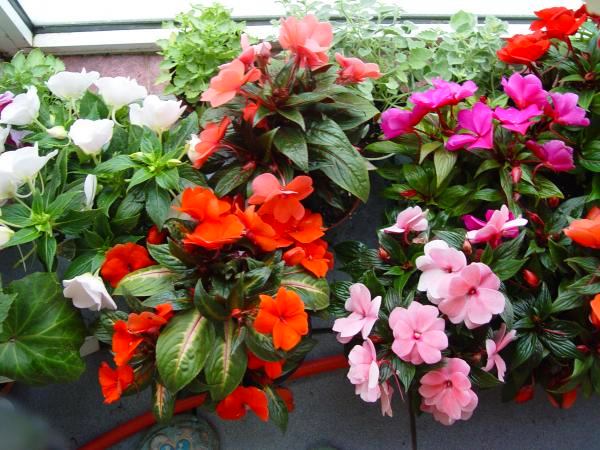
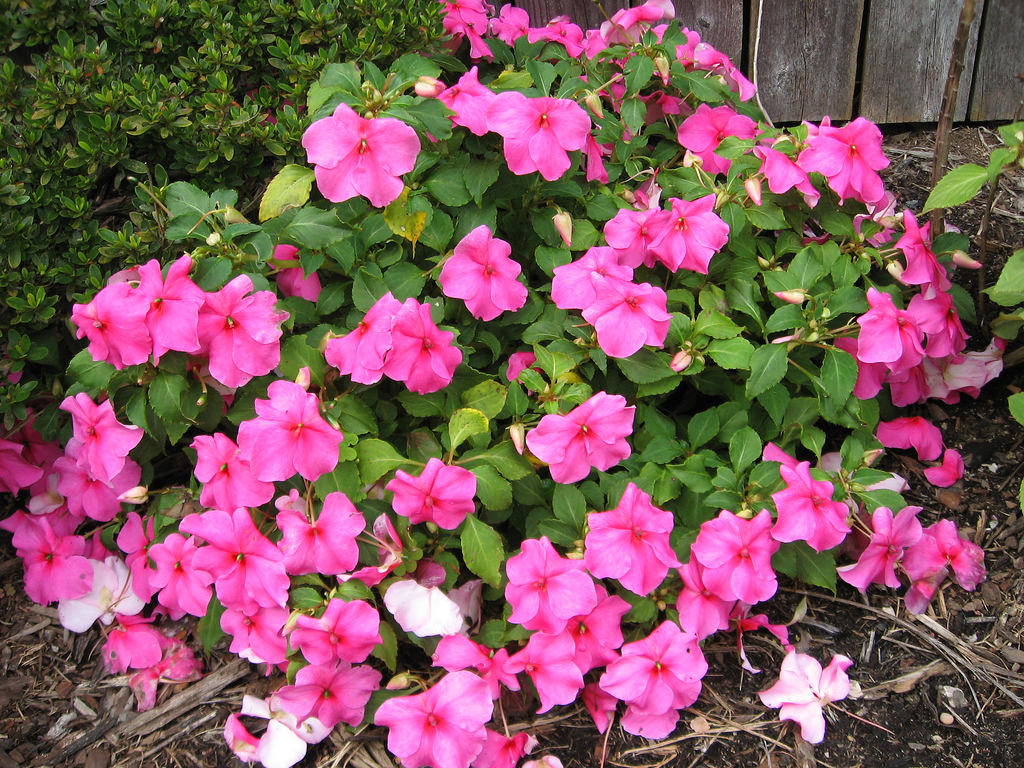
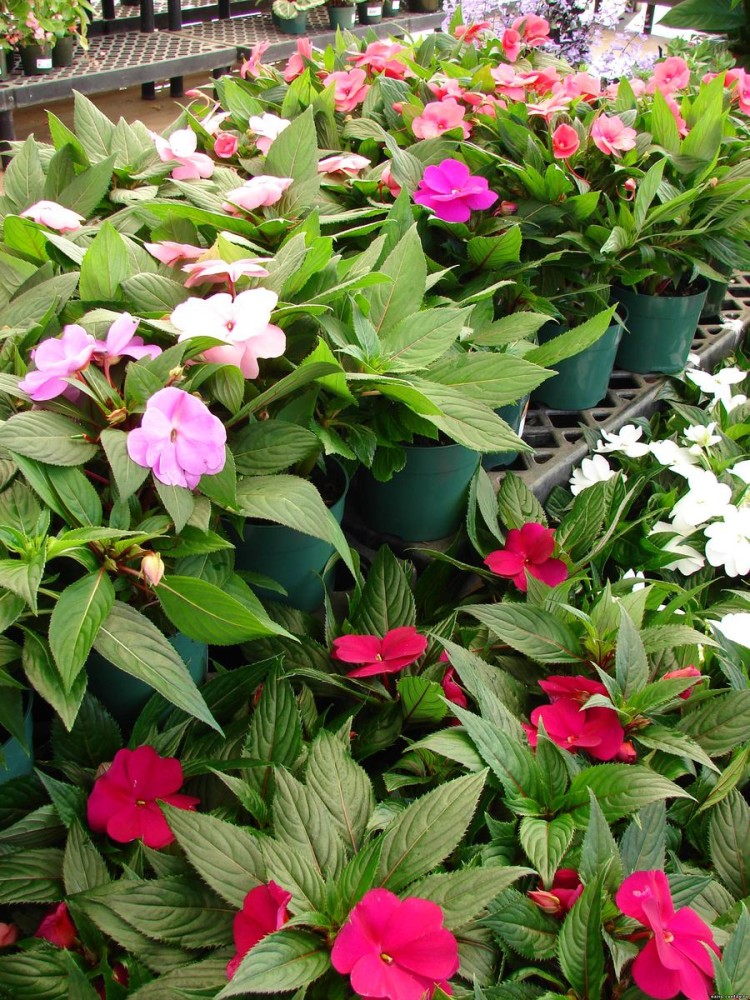
Verbena
Thanks to long and abundant flowering,unpretentiousness, diversity of species and varieties, resistance to diseases and pests, verbena is widely used by amateurs and professionals to decorate balconies. Flowers of verbena hybrid varieties are large, variously colored - from white through pink to red, from lilac to blue; they have a subtle, pleasant aroma. The most intense aroma of verbena manifests itself in a sunny and hot place. The spreading form of verbena bushes with drooping stems allows you to grow it as an ampelous plant. On the balcony in hanging baskets or in external boxes, verbena gives a real waterfall of greenery and flowers.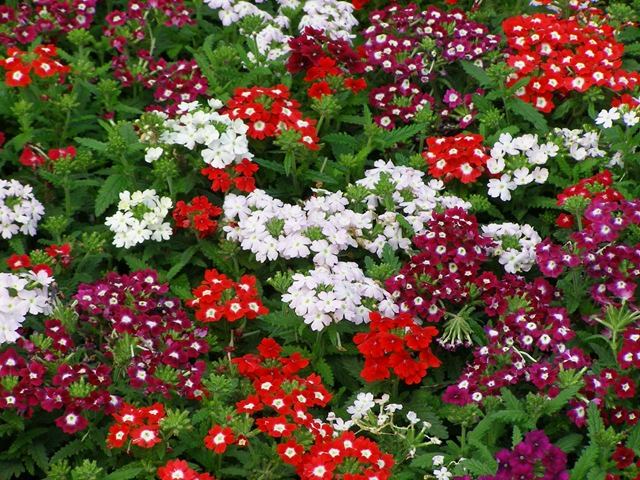
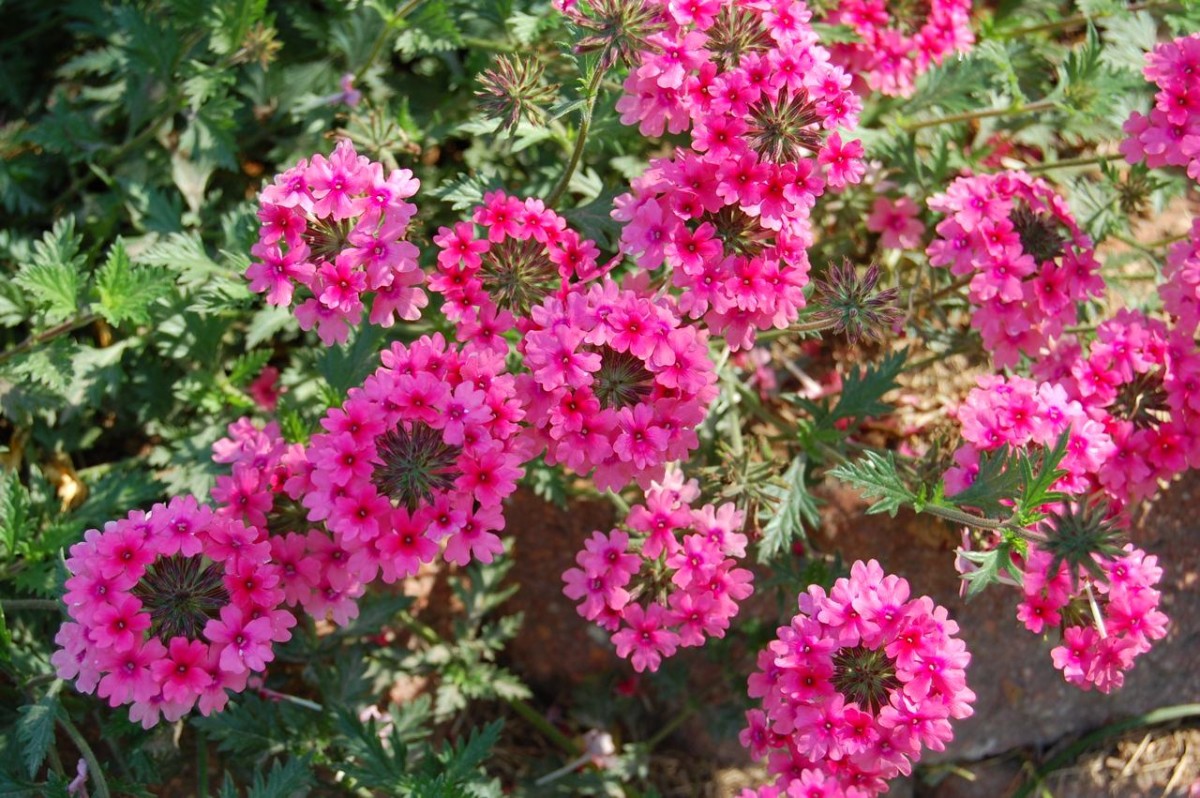

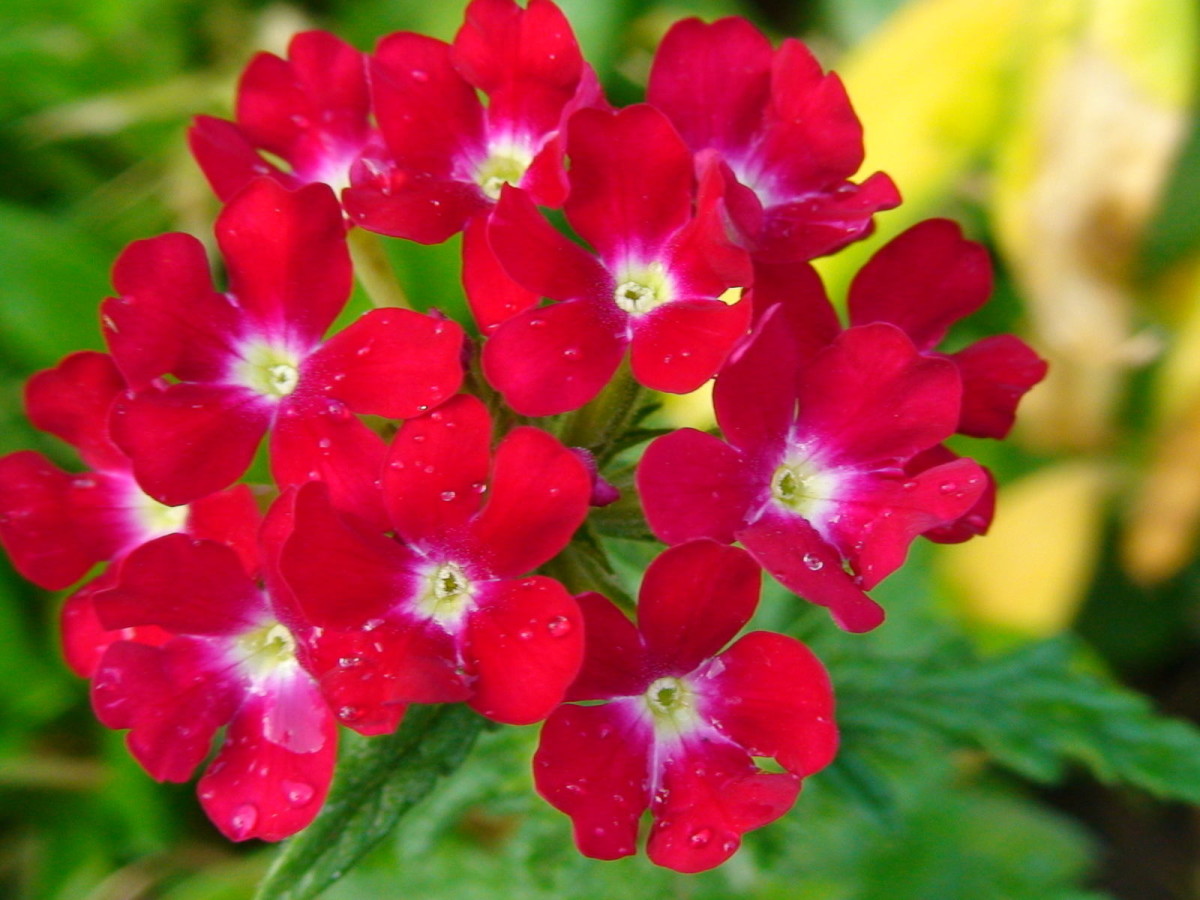
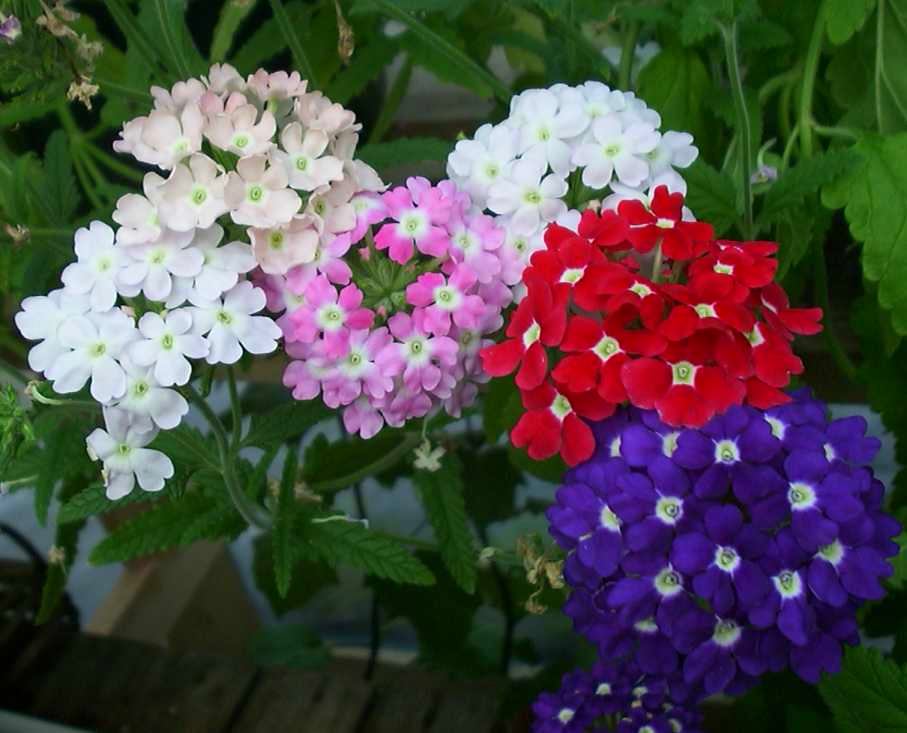
Chlorophytum
Who doesn't know chlorophytum?This is one of the most common indoor plants, which perfectly purifies the air. When planted on a balcony, chlorophytum can form a monstrously powerful bush (it looks most impressive in a hanging basket) with dozens of drooping yellow stems-arrows with numerous rosettes of children on them. The tiering can reach several levels - the older children also throw arrows with daughter plants. At the same time, the abundance of light allows chlorophytum to look as bright and elegant as possible due to the white and yellow stripes on the leaves. Hybrid varieties are even more decorative than the usual "wild" form - they have wider twisted leaves of a bright color. We value chlorophytum not at all because of the nondescript flowers, but for the elegant leaf and violent nature. It does not need care at all, just water it. But when fed, it responds with gratitude and becomes even more lush and luxurious.
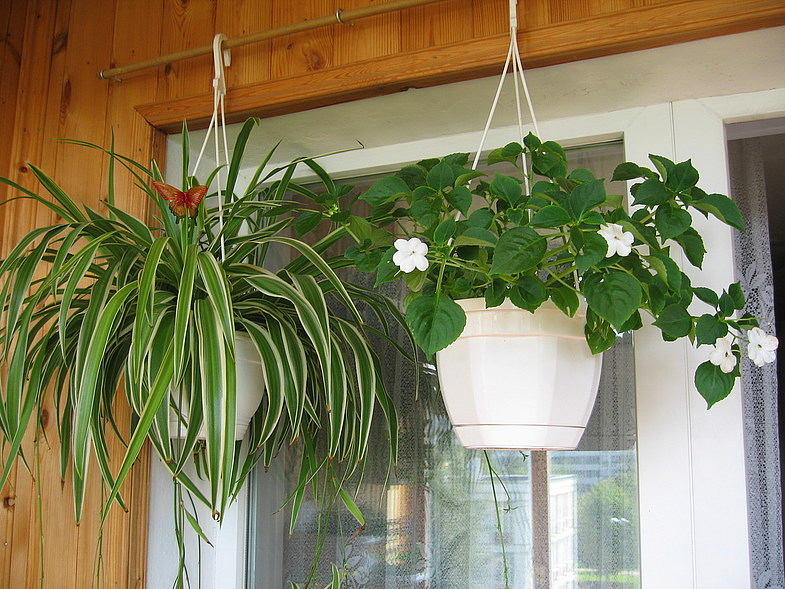

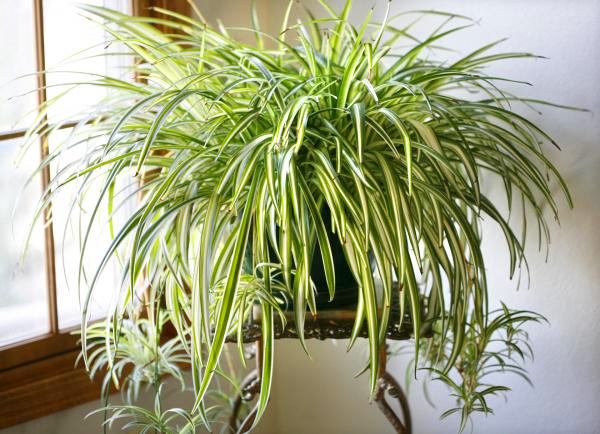
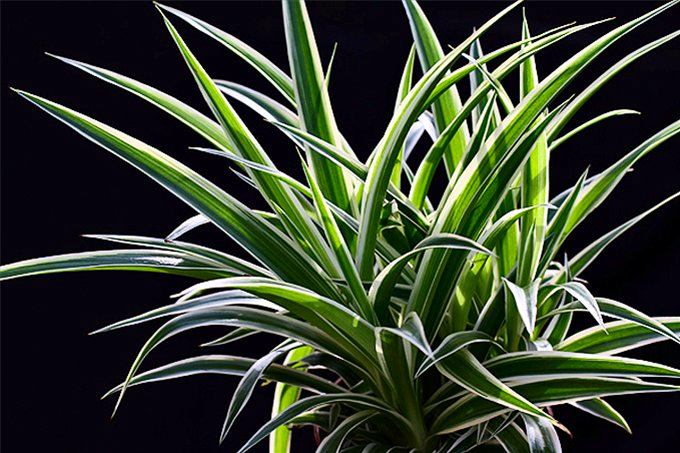
Fuchsia
Due to its unpretentiousness and ease of reproduction,Fuchsias, with their wonderful flower shape and color, have long been favorite and very common indoor plants. Fuchsias can be planted in hanging baskets (ampelous forms), formed into standard trees or beautiful bushes. It is clear that in our climate, plants should winter in an apartment - or in a glazed and heated loggia (balcony). Flowers, depending on the species and variety, have a wide range of colors - white, pink, red, purple. There are varieties with double coloring, double. It blooms for a long time and abundantly, especially modern hybrid varieties. One plant can have many hundreds of drooping flowers, mostly reminiscent of Thumbelina in a crinoline.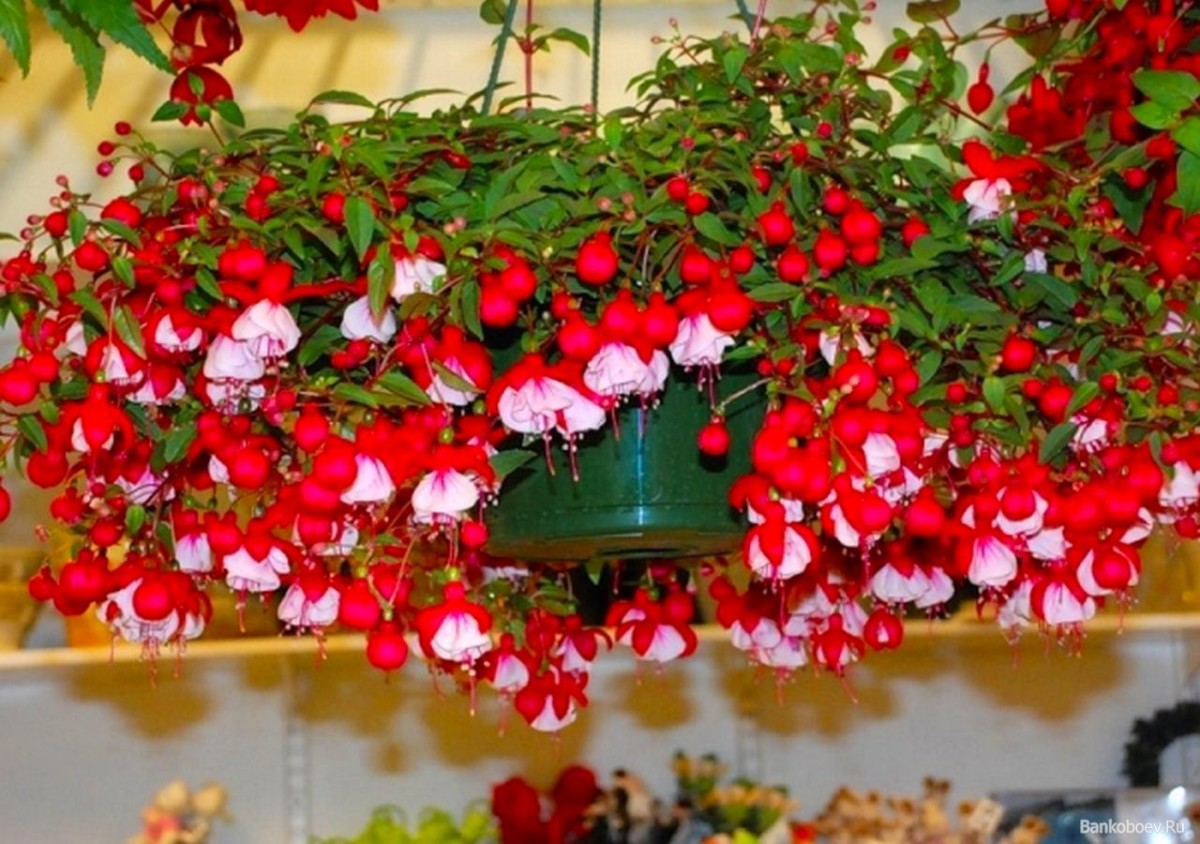

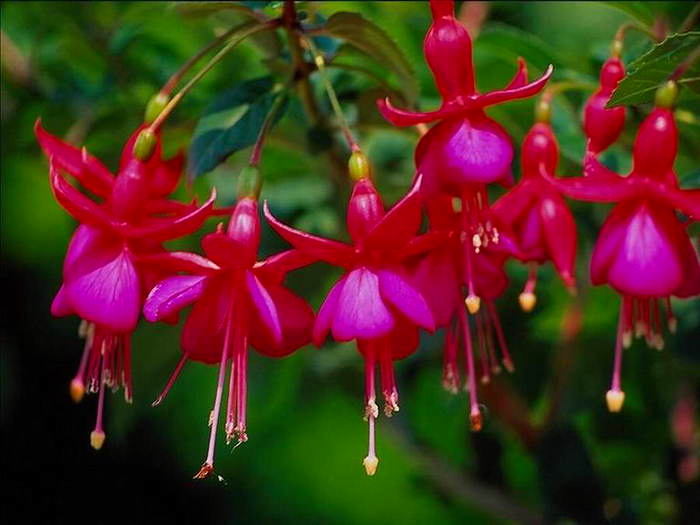
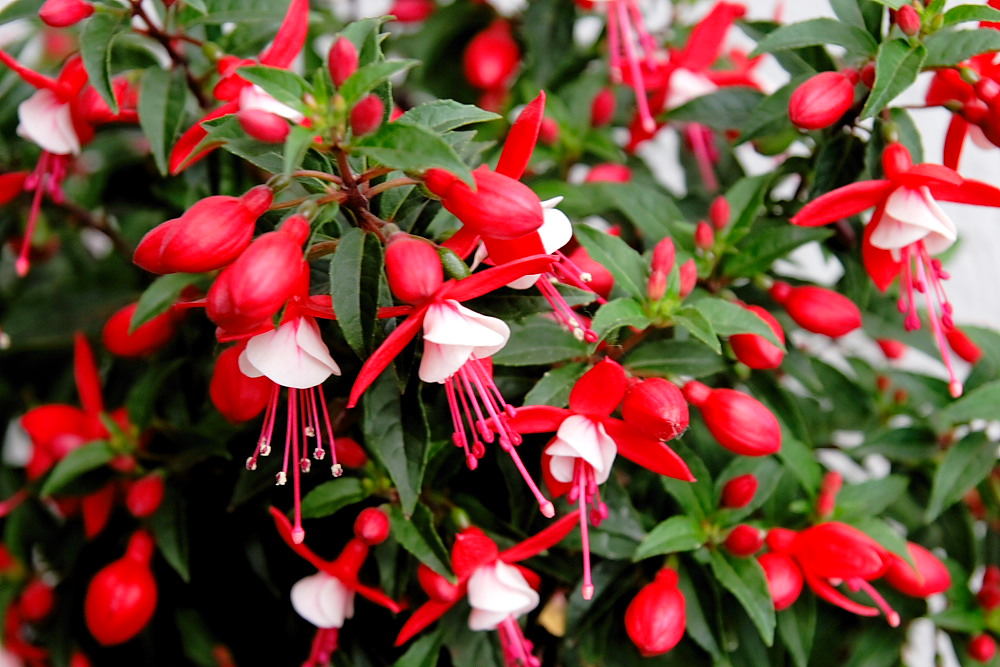
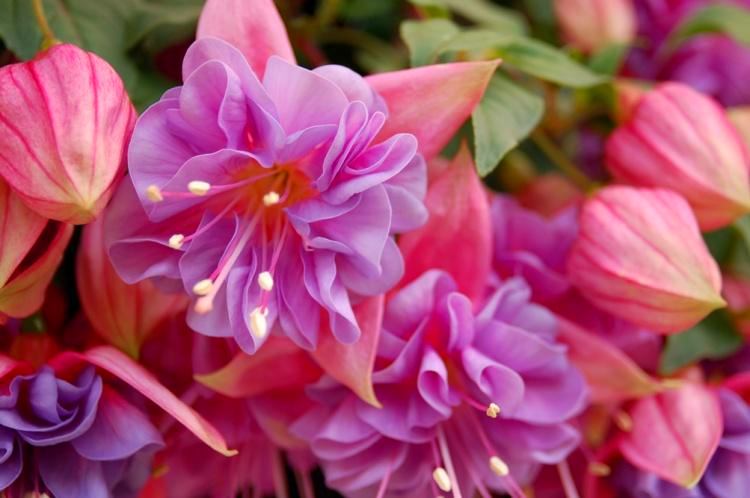
Begonias
Begonia is one of the most beautifulplants that decorate our lives with very beautiful leaves and abundant double flowers. Many species, a huge number of hybrids - hundreds and hundreds. Among them, almost all easily tolerate the European climate - initially, begonia grew exclusively in greenhouses. Today, various hybrid forms and varieties of cultivated forms of begonias are widespread throughout the world. The most popular begonia can be called tuberous ever-flowering with loose double flowers that please the eye all season. In addition, it is also unpretentious! And with proper storage of tubers, in the spring you will not need to buy new plants.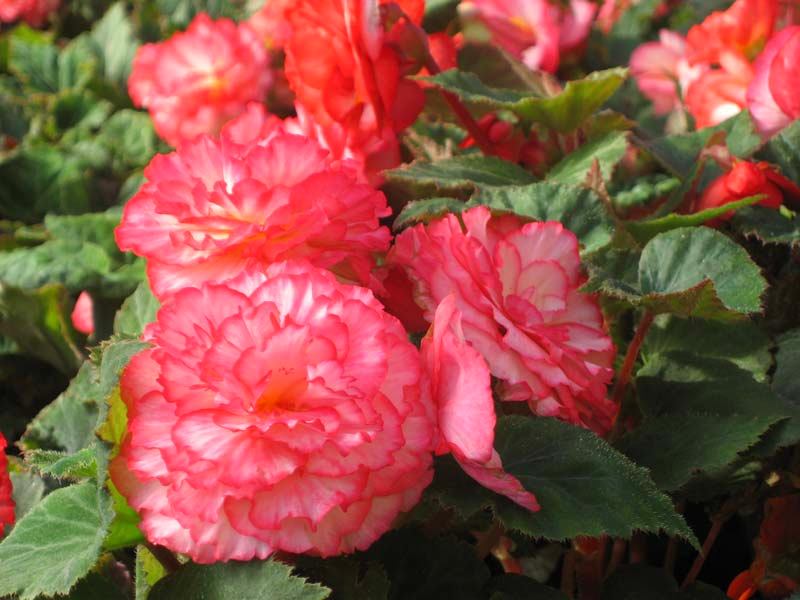
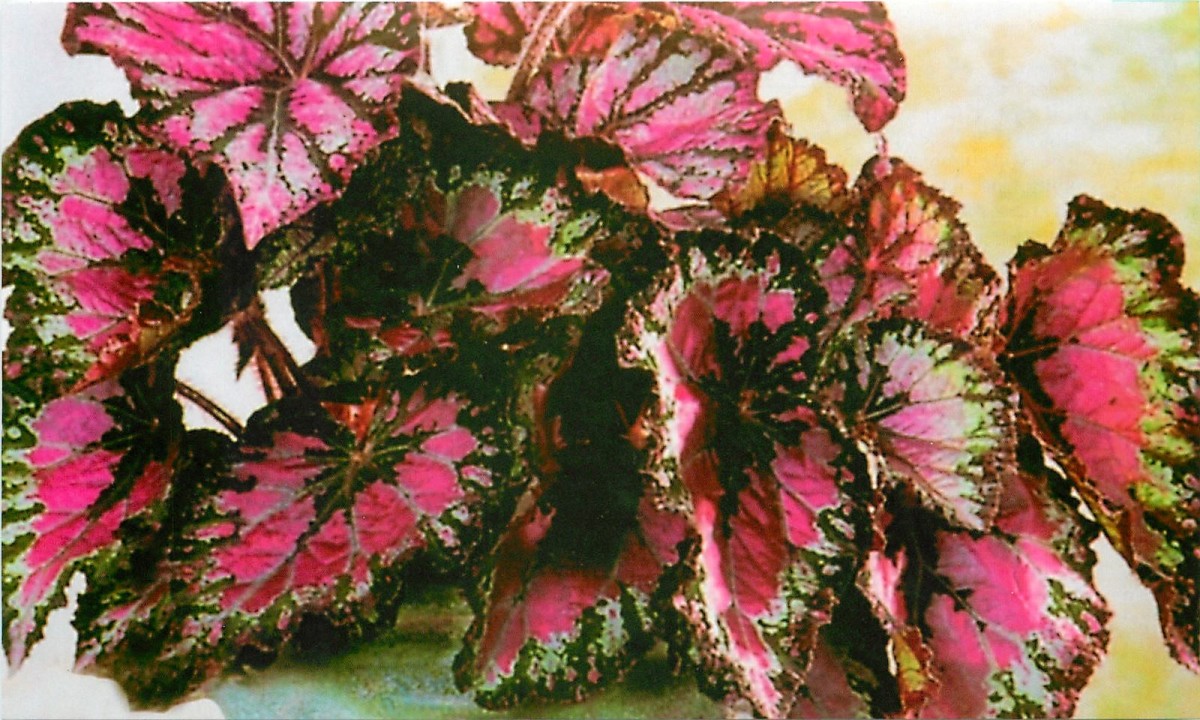
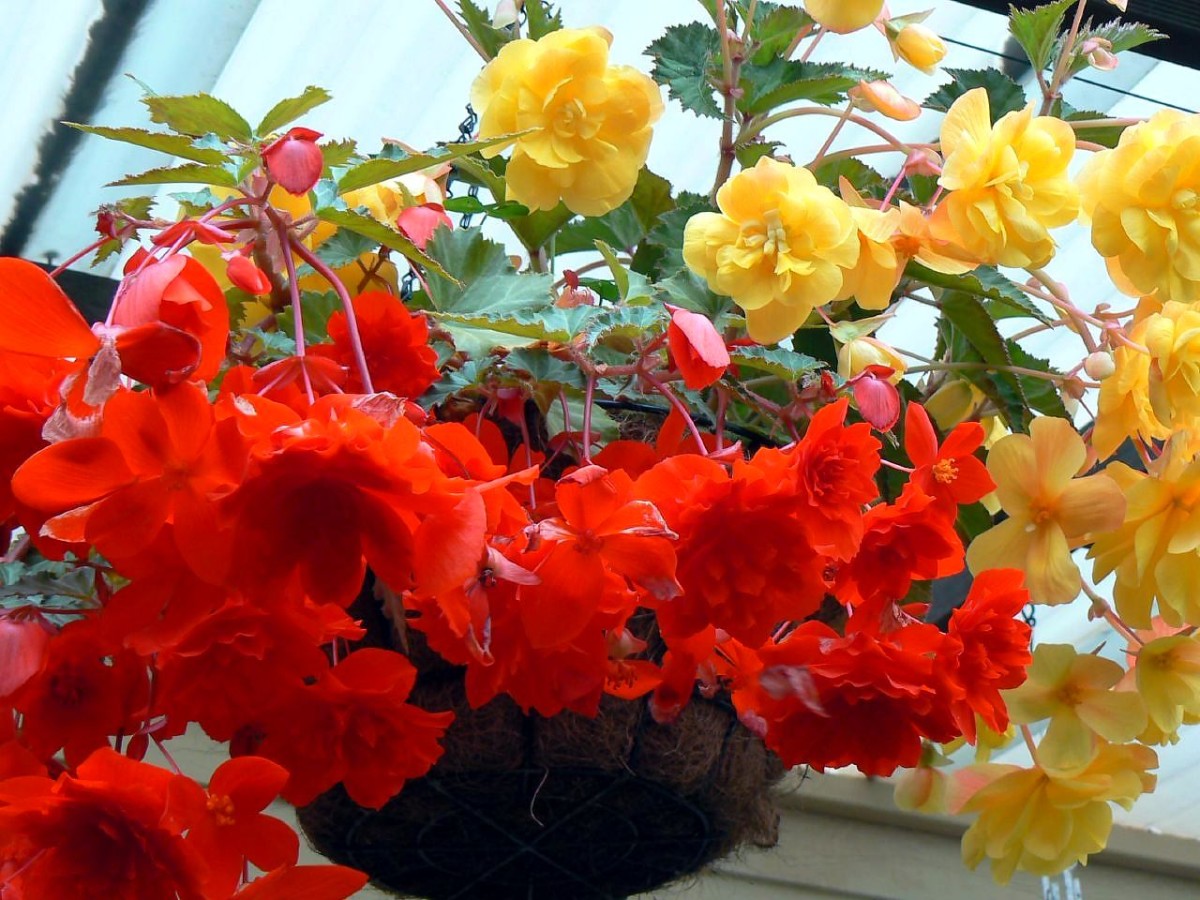



Geranium, pelargonium
The genus of geraniums (pelargoniums) includes about 250 species.species of herbaceous and shrubby plants. In natural conditions, pelargoniums grow on mountain slopes, on dry, infertile soils - which is very "useful" for placing it on balconies on the south side. The long-standing popularity of pelargonium is due to its unpretentiousness, abundance of beautiful flowers, ease of propagation and a long flowering period - from early spring to late autumn. Geranium is ideal for landscaping balconies: it loves fresh air, tolerates both heavy rains and direct sun, and is drought-resistant even in dry wind (draft). Due to the fact that this is a perennial, for the winter it is necessary to either bring geranium into the house or provide it with protection from the cold directly by glazing it and heating it with an electric heater.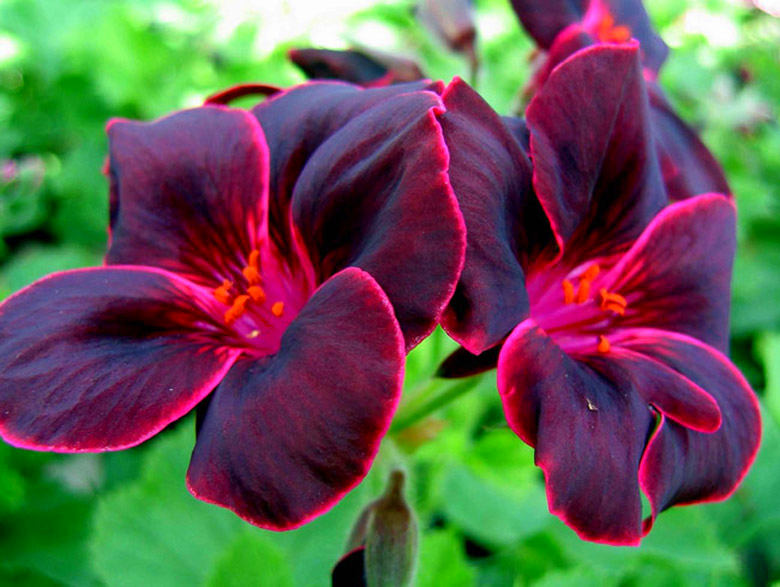
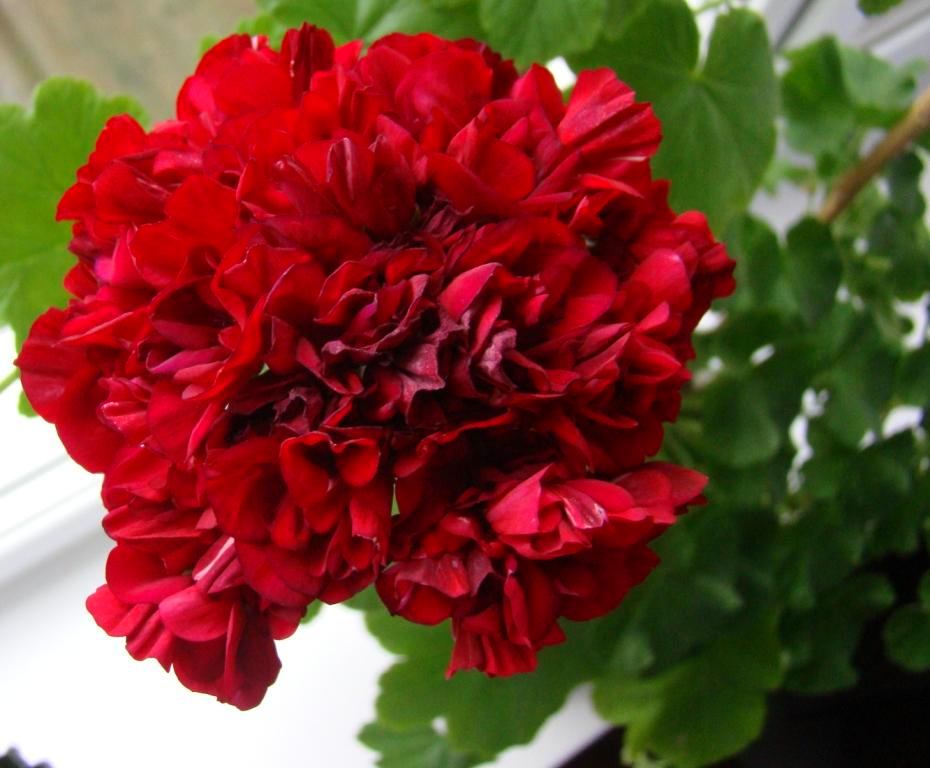
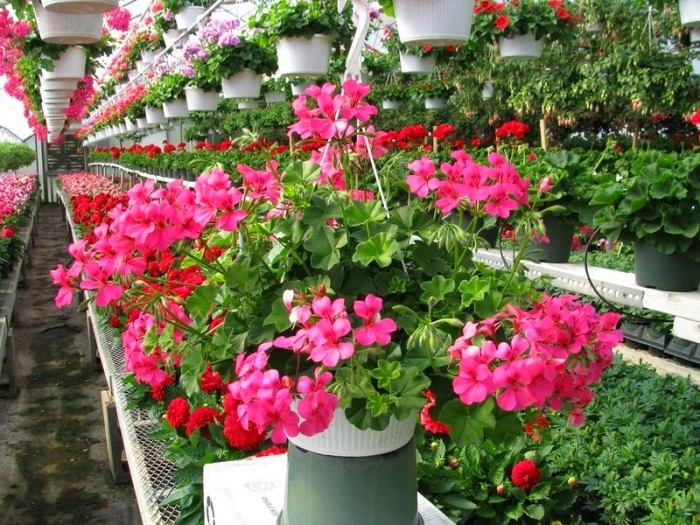

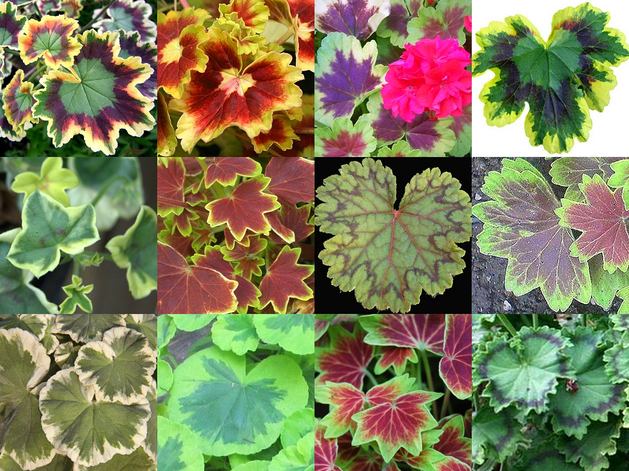
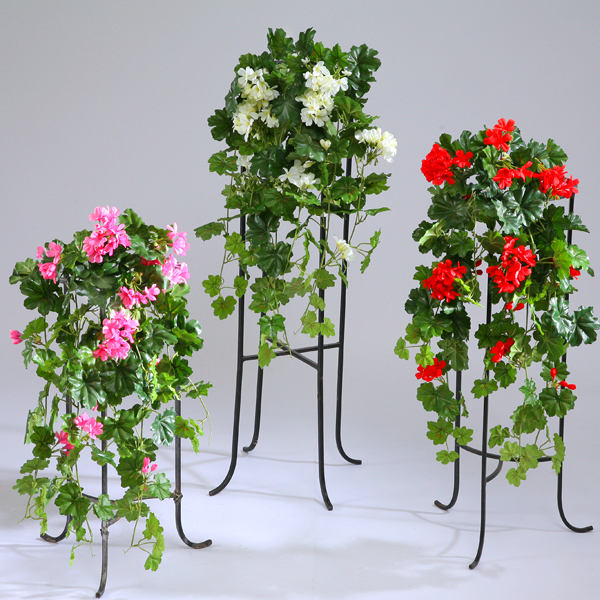
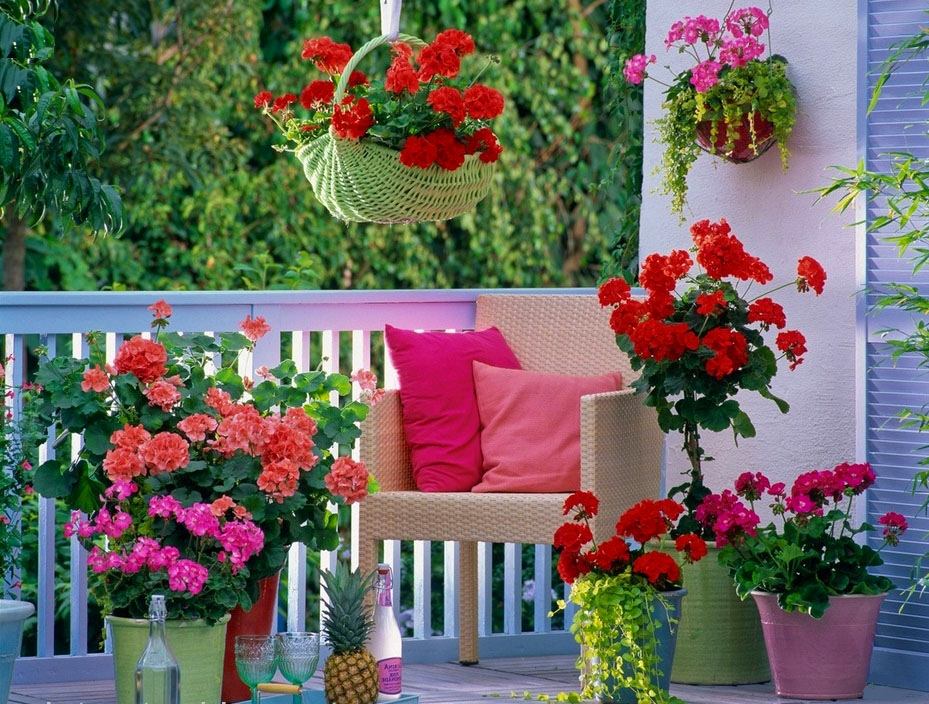
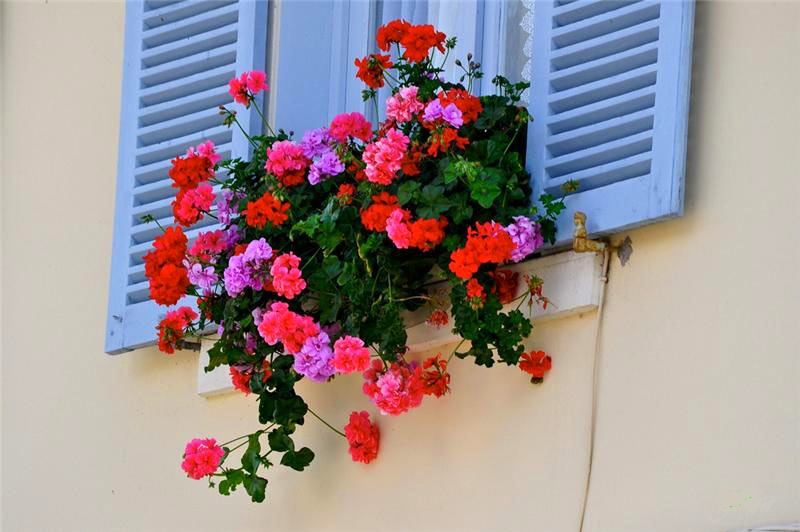
Sweet pea
Sweet peas are one of the most beautifulclimbing plants, which are usually used for vertical landscaping of balconies and windows, terraces, gazebos and other small architectural forms. Sweet peas have gained such popularity due to their unique aroma, exquisite flower structure, abundant and long flowering, and the richest range of colors: from pure white through all shades of pink and red to dark burgundy and from soft blue and lilac to dark purple and even cherry-chestnut. Its additional advantage is that it is an annual, so there will be no problems in the conditions of an open balcony and winter. Just plant new specimens in the spring. The number of varieties exceeds a thousand, so there is plenty to choose from. Naturally, peas need support in the form of a lattice or guide cables, a net. The plant forms a translucent flowering "wall", which is very decorative.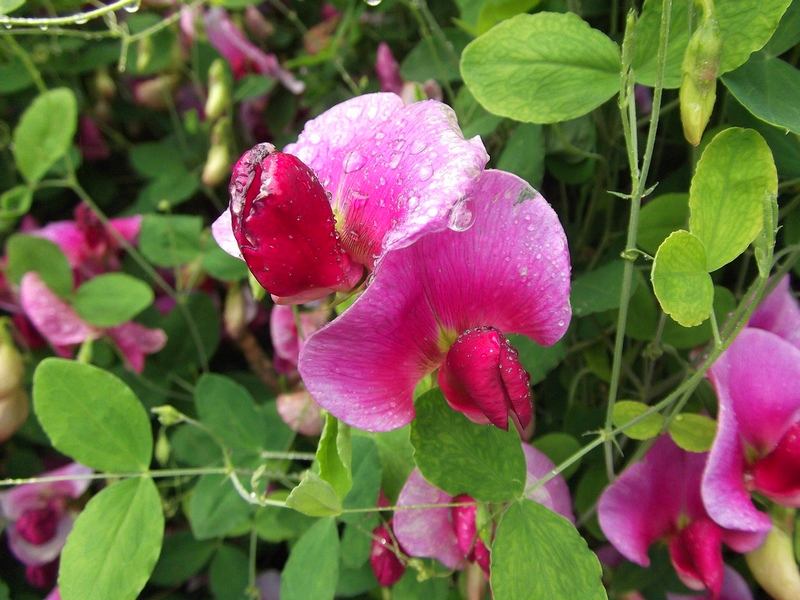
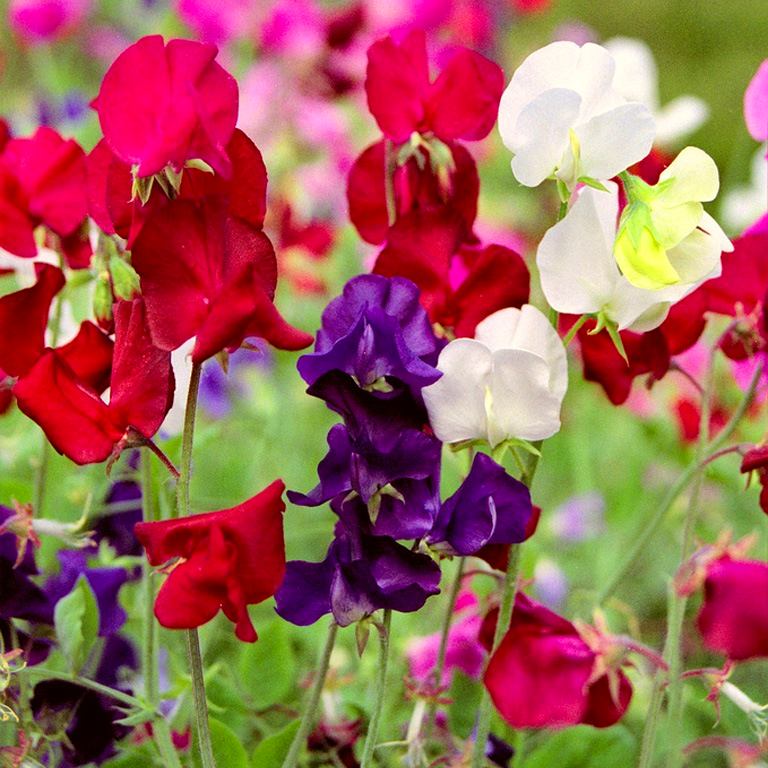
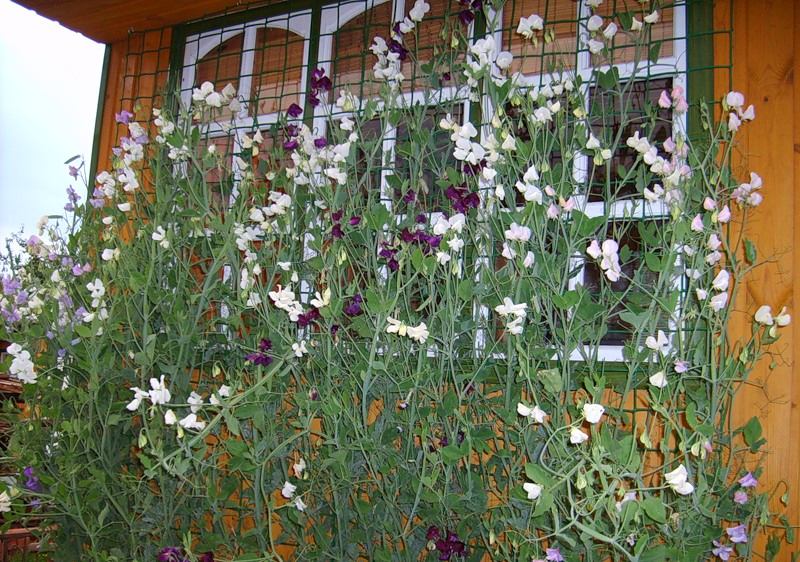
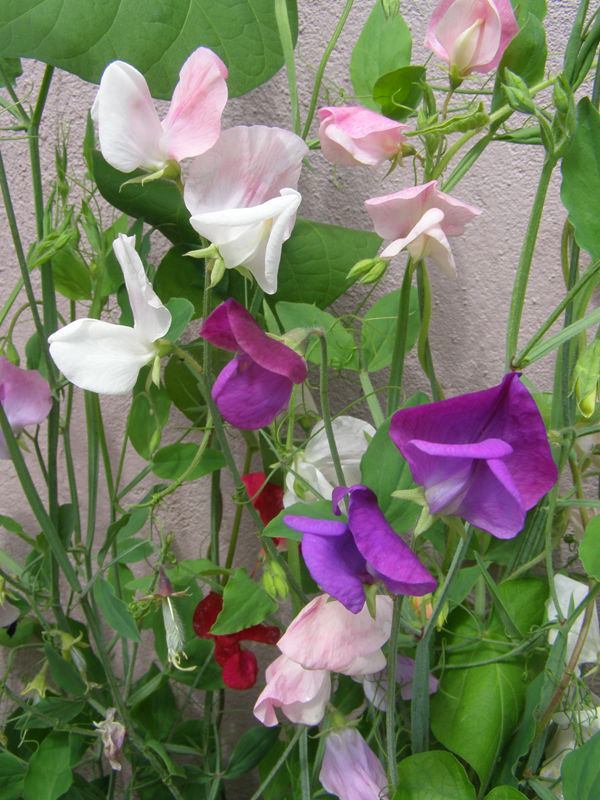
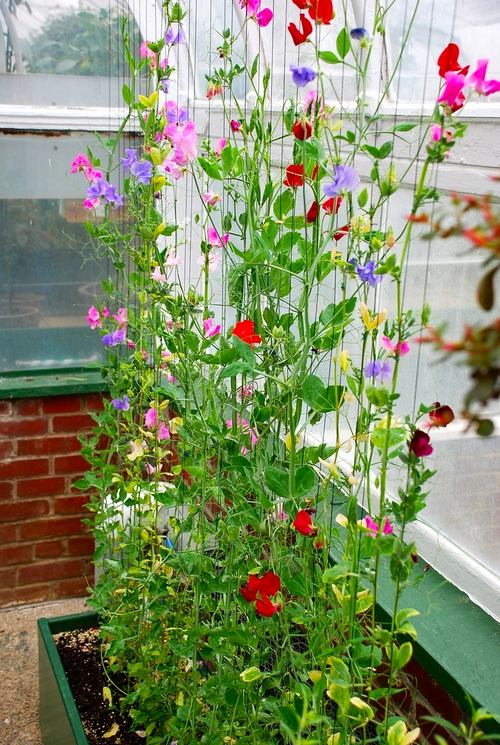 Our opinion:— For beginners, we give a recommendation on choosing soil. Universal light soil for flowering plants is quite suitable. Pots should be wide rather than deep, good drainage is a must. It is not recommended to overwater: all plants will tolerate a short "drought" better than even a short "flooding".
Our opinion:— For beginners, we give a recommendation on choosing soil. Universal light soil for flowering plants is quite suitable. Pots should be wide rather than deep, good drainage is a must. It is not recommended to overwater: all plants will tolerate a short "drought" better than even a short "flooding".
Bindweed
For some reason forgotten, but once very much soThe popular bindweed is characterized by fast growth and long flowering throughout the season. Luxurious gramophones of selected varieties have a diameter of 10-12 centimeters and are simply irresistible. Their wonderful property is to close by the evening, that is, your balcony will look different in the early morning than in the evening. If you once plant bindweed on the balcony, there will be no problems with the seed material - after each gramophone you will have 67 large seeds-lobes in your hands, which have excellent germination. Like all the other plants presented, it requires practically no care - except that the lashes should be directed in the right direction and watered.